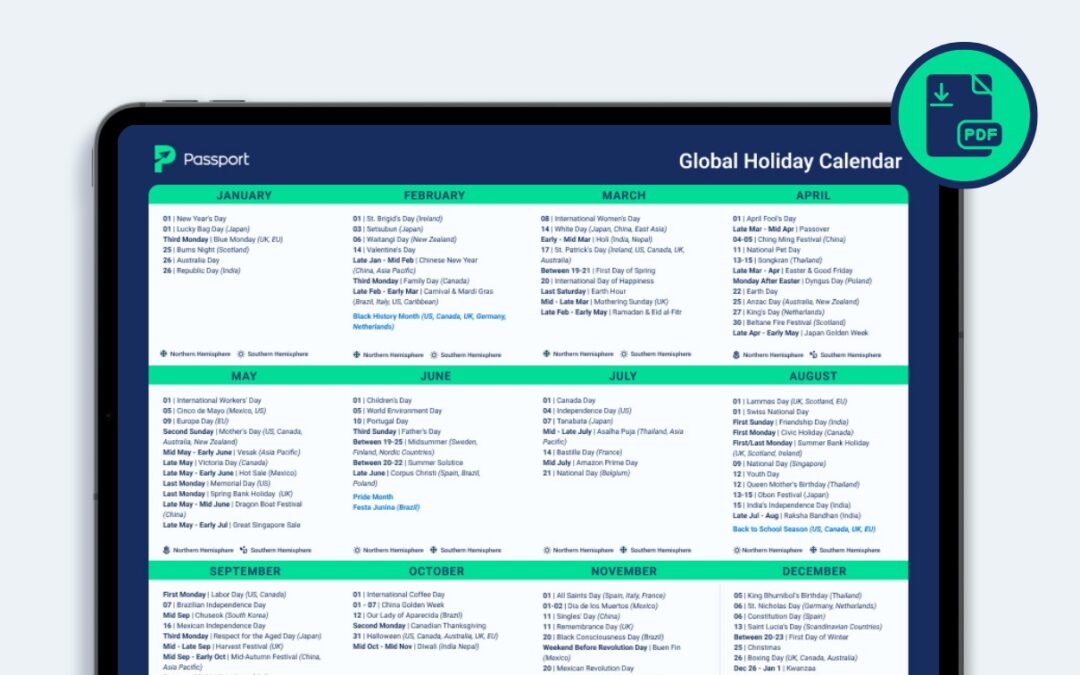Expanding internationally offers incredible growth opportunities for ecommerce brands. In 2023, the global cross-border ecommerce market was valued at $1.01 trillion and is expected to reach $6.72 trillion by 2032, illustrating the immense potential for businesses looking to broaden their customer base.
As Tom Griffin, President of Passport, notes, “Expanding internationally can more than double a brand’s addressable market. With domestic expansion in the U.S. becoming more expensive, brands need to look globally for new growth opportunities. Many markets offer high digital adoption and ecommerce spending, often with lower customer acquisition costs.”
While ecommerce platforms make it easier than ever to reach international markets, selling to customers worldwide presents distinct challenges. Cross-border shipping is no longer just about delivering goods – it’s about meeting the heightened expectations of today’s consumers. In this guide, we’ll explore strategies for navigating these complexities, from managing logistics and compliance to ensuring a seamless customer experience.
Watch the full eCom Logistics Podcast
Tom Griffin shares insider strategies for successfully expanding your ecommerce business and maximizing growth in international markets.
The Framework for Successful Cross-Border Shipping
Cross-border shipping is more than just moving products from point A to point B. Navigating customs regulations, dealing with taxes, and managing customer expectations all add layers of complexity to international expansion. For a smooth entry into global markets, brands should focus on three key areas: customer experience, logistics, and compliance.
Let’s take a closer look at each of these:
1. Customer Experience
Providing a localized experience is essential for attracting and retaining international customers. This can include displaying prices in local currencies, implementing tailored pricing strategies, creating region-specific landing pages, and more. Just as important is ensuring a transparent checkout process, so customers aren’t surprised by unexpected costs from duties and taxes.
2. Logistics
Managing international logistics means ensuring products move efficiently across borders while meeting each country’s import requirements. Additionally, accurate delivery estimates and reliable tracking help build trust by giving customers visibility throughout the shipping process.
3. Compliance
Navigating compliance is essential to avoid delays, unexpected costs, and potential legal penalties. Following customs regulations ensures smooth clearance, while handling duties and taxes properly – whether through DDU or DDP – can directly impact the customer experience.
For brands to thrive globally, customer experience, logistics, and compliance must work together seamlessly. As Tom Griffin explains, “Shipping execution – meeting delivery expectations and providing a great experience – is crucial, especially for international orders. The first-time buyer experience determines whether they become a repeat customer.”
How to Get Cross-Border Ecommerce Right
Getting cross-border ecommerce right means focusing on localization, clear communication, and transparency. These elements help foster trust and elevate the experience for your international customers. When done well, they lead to transformative growth and set your brand up for long-term success in global markets.
Here are some actionable tips to help you get started:
- Localize Every Touchpoint – Tailor the shopping experience with region-specific preferences like local currencies, payment methods, customized messaging, and pricing structures. As an example, UK customers expect VAT to be included in the price, and failing to do so may lead customers to reconsider their purchase.
- Communicate Clearly Pre-Purchase – Display duties, taxes, and estimated delivery times upfront at checkout. Surprise costs are the leading cause of cart abandonment, followed closely by unclear information. When customers aren’t confident about the total cost or delivery time, they’re less likely to complete a transaction.
- Use DDP to Enhance Experience – Offer Delivered Duties Paid (DDP) shipping, where duties and taxes are included in the total cost. This approach provides a smoother customer experience by eliminating unexpected costs at delivery and ensuring transparency throughout the buying process.
- Set Customer Expectations – Provide realistic delivery timelines and communicate openly about any potential delays. This helps manage expectations and improves customer satisfaction by ensuring they understand and trust the delivery process.
- Keep Buyers Informed Post-Purchase – Provide up-to-date tracking to keep buyers informed about their shipments. Regular updates throughout the delivery process encourage engagement and strengthen customer relationships, increasing the likelihood of repeat purchases.
While going global can be complex, advanced tools within ecommerce platforms and third-party solutions have made international selling more accessible than ever. However, true success comes from partnering with experts in customer experience, logistics, and compliance – that’s where Passport comes in.
With innovative technology and seamless integration, Passport makes it easy for brands to navigate cross-border shipping challenges and unlock new growth opportunities. Our all-in-one solutions, like Passport Global, simplify every aspect of international commerce, empowering businesses to expand effortlessly into new markets and drive sustainable growth.
Ready to take your brand to the next level? Request a free demo to discover how Passport can help you achieve your global potential.





